Gratien Gélinas
-

Gratien Gélinas in the role of Fridolin.
Source : Cinémathèque québécoise, 1995.1287.PH.01
-
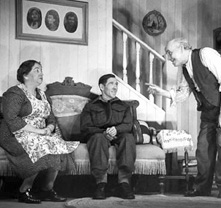
Source : Cinémathèque québécoise, 1995.2736.PH.01
-
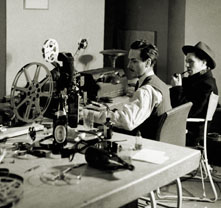
Editing the film La dame aux camélias, la vraie (Gratien Gélinas, 1943).
Source : Anne-Marie Sicotte / Bibliothèque et Archives Canada, Mikan 3919036
-
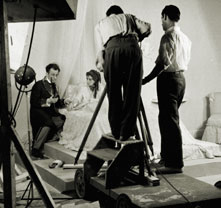
Juliette Béliveau during production of La dame aux camélias, la vraie (Gratien Gélinas, 1943).
Source : Anne-Marie Sicotte / Bibliothèque et Archives Canada, Mikan 3919035
-
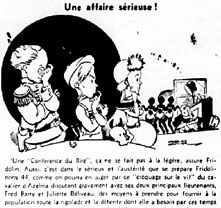
Le Canada, 15 January, 1944, p.5.
Source : Bibliothèque et Archives nationale du Québec
-
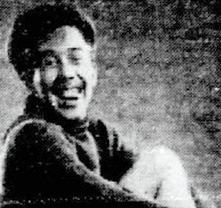
Le Petit journal, 15 January, 1939, p.45
Source : Bibliothèque et Archives nationale du Québec
-
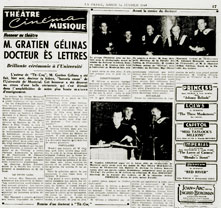
La Patrie, 1 February 1949, p.17
Source : Bibliothèque et Archives nationale du Québec
-
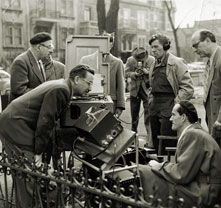
Gratien Gélinas listens to the sound recording on acetate during production of Tit-Coq (Gratien Gélinas and René Delacroix, 1953). Paul L’Anglais (leaning forward to the left) and René Delacroix (next to Gélinas to his left) are also present.
Source : Anne-Marie Sicotte / Bibliothèque et Archives Canada, Mikan 3919038 (e01076532)
-
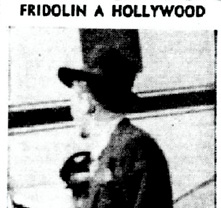
Le Petit journal, 22 juin 1941, p.41
Source : Bibliothèque et Archives nationale du Québec
Gratien Gélinas was not yet thirty years old and was working as a radio actor when he created the character who would make him famous, Fridolin, a facetious and provocative boy. Between 1938 and 1946, Gélinas and his troupe mounted eleven editions of his variety revue Les Fridolinades, where humour and irony went hand in hand. For the 1943 edition, Gélinas shot a 16mm colour short film to be included in the show called La Dame aux camélias, la vraie, a satire of the work of Alexandre Dumas fils with Juliette Béliveau in the role of the courtesan. Not content with making fun of the novel and its tubercular, love-struck heroine, Gélinas contrasted “high culture”—of which this novel, adapted several times to the cinema, theatre and opera, is an example—with the popular culture represented by Les Fridolinades. Two years later, Roger Blais made a film entitled Fridolinons, made up of several acts from the 1945 edition of the stage show. This National Film Board film proved to be highly popular.
Gélinas became interested in film and agreed to sit on the NFB’s board of directors. He soon left this position to shoot an adaptation of his play Tit-Coq (1953). Co-directed by René Delacroix, produced by Paul L’Anglais and financed by J.A. DeSève, this story of an illegitimate young man who falls in love with the daughter of a good family before leaving to fight in the war touched the hearts of the general public, who sympathised with Tit-Coq’s anger and pain upon returning home and finding his fiancée married to someone else. Critics praised the film’s direction, Gélinas’ acting and the strength of the script. Gélinas, however, was more a man of the theatre than of the cinema, and he made no further films. He chaired the Canadian Film Development Corporation from 1969 to 1977 and acted in a few later feature films.